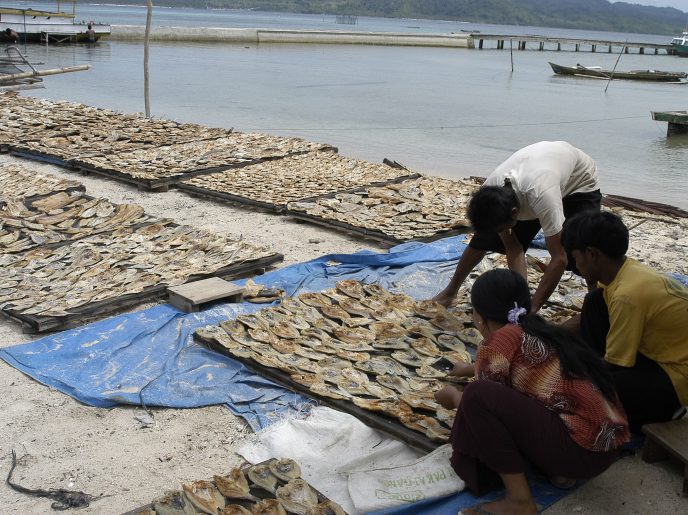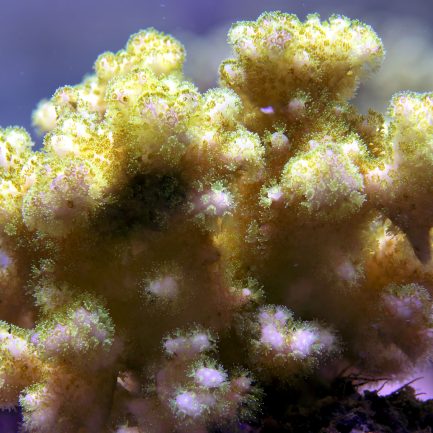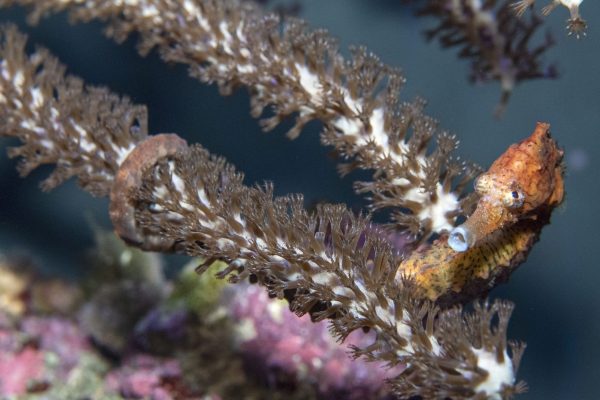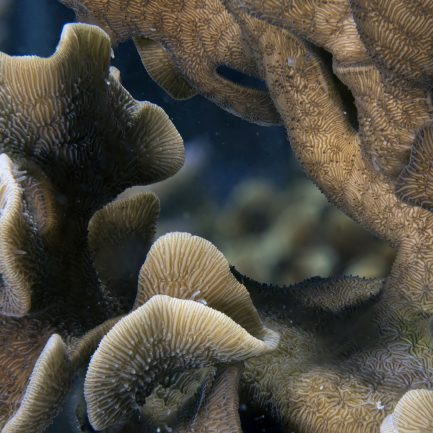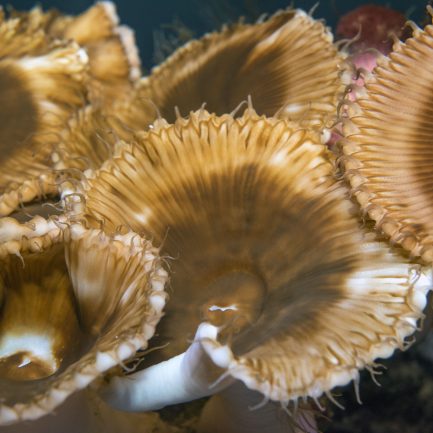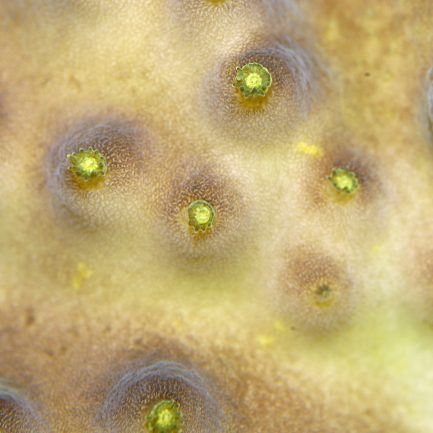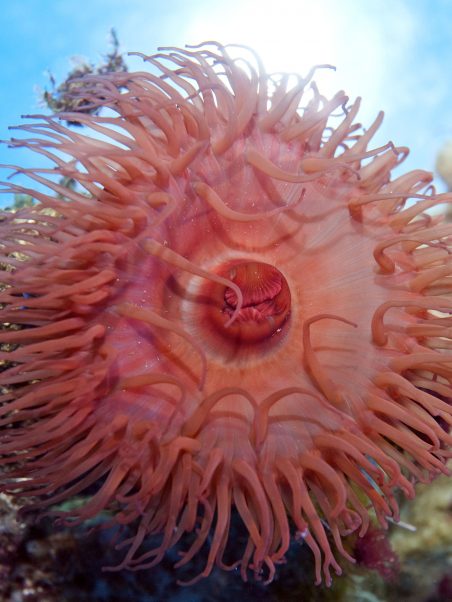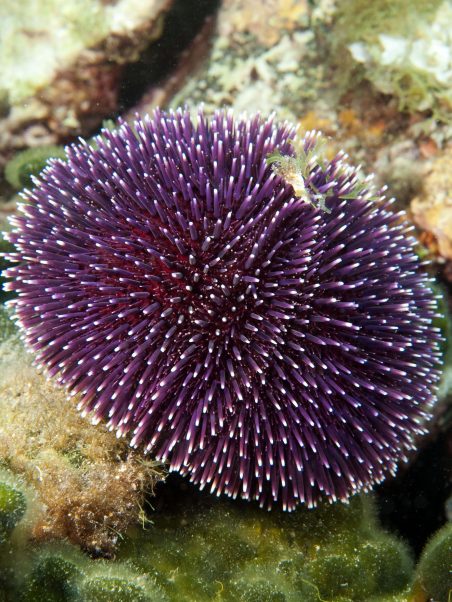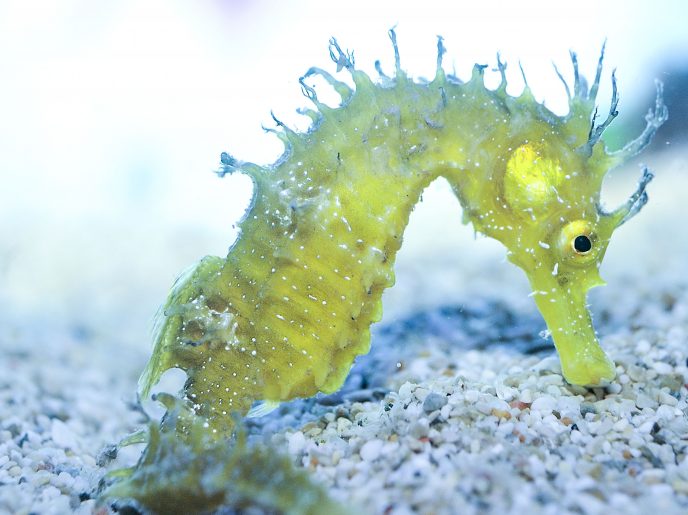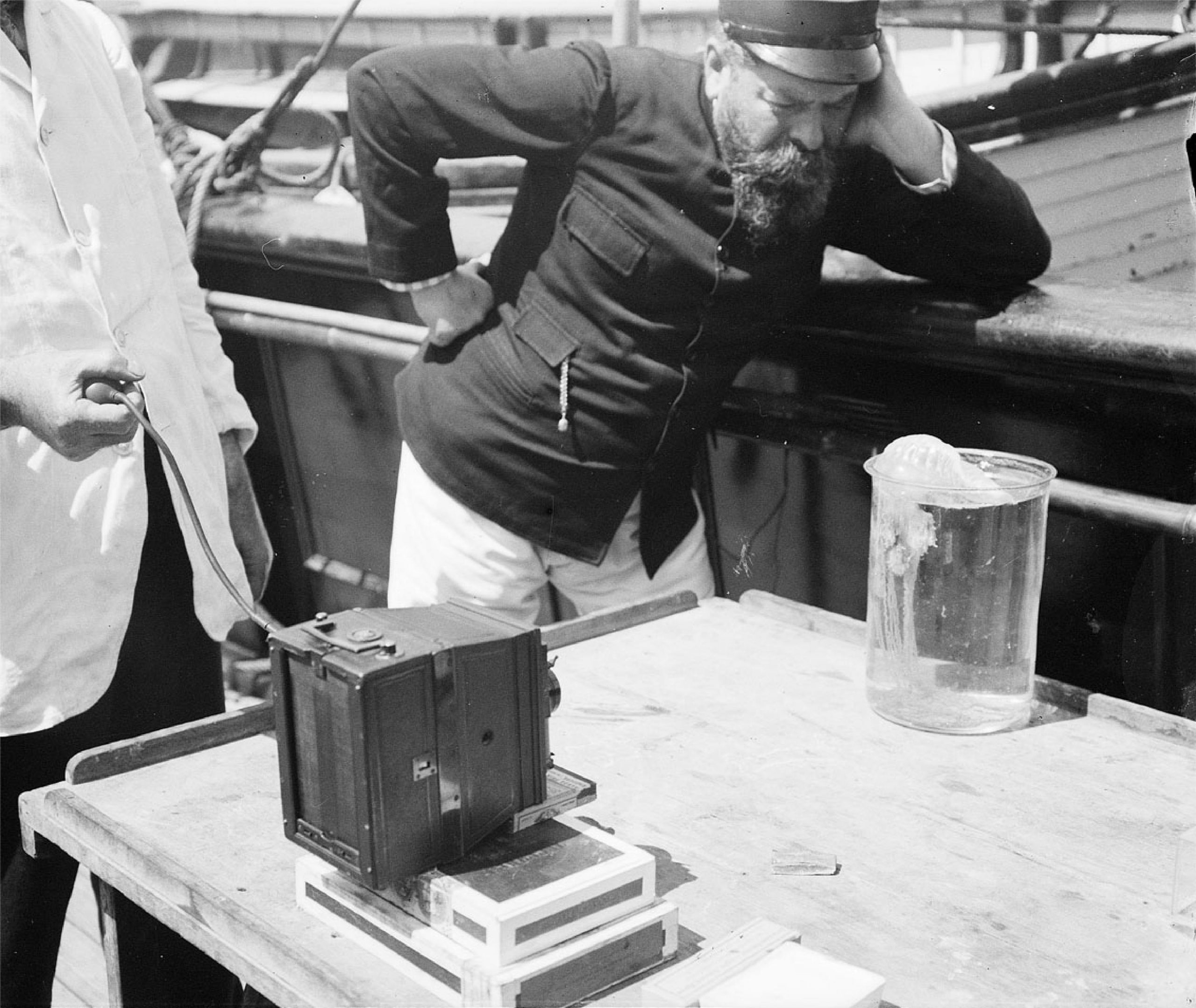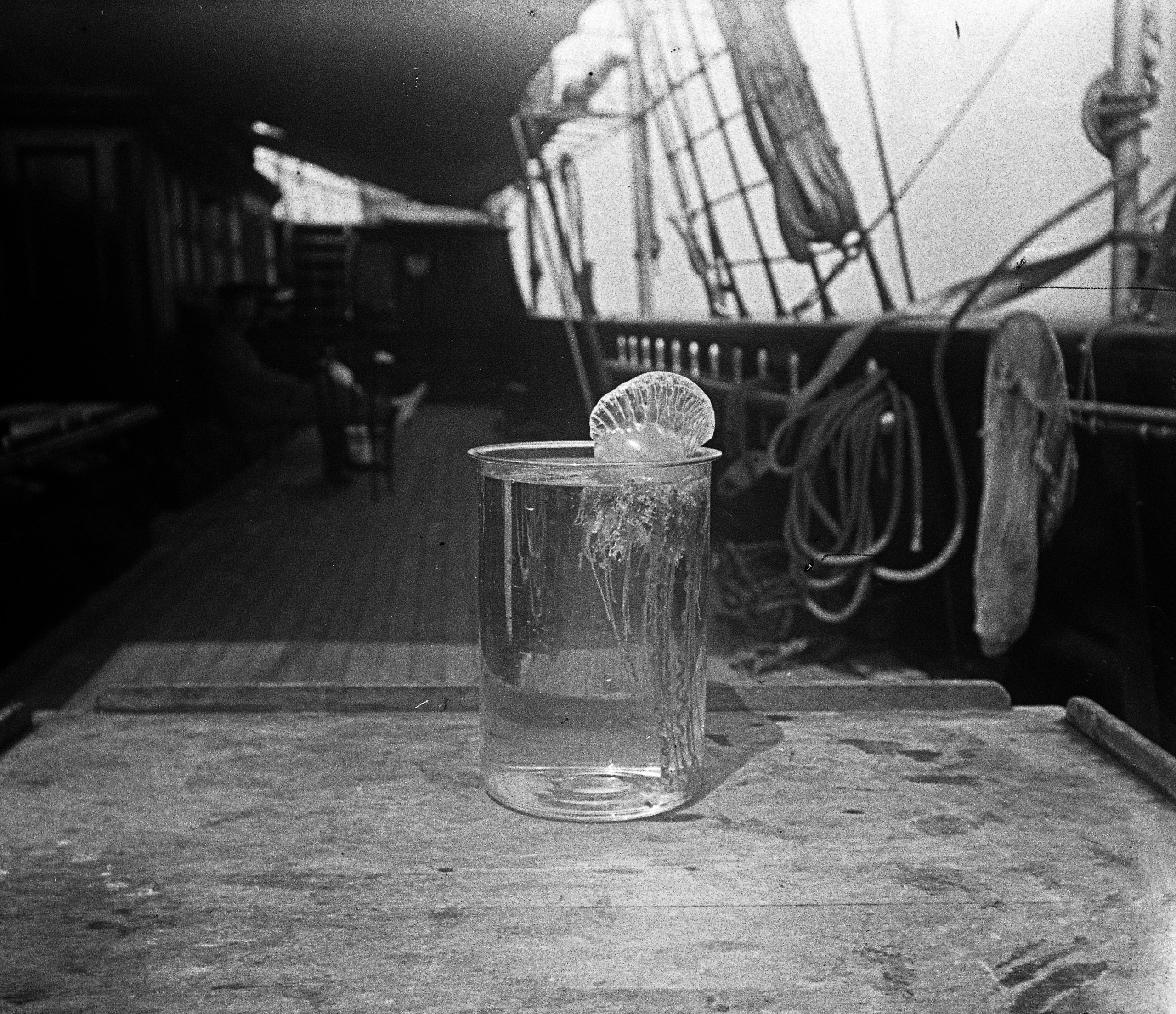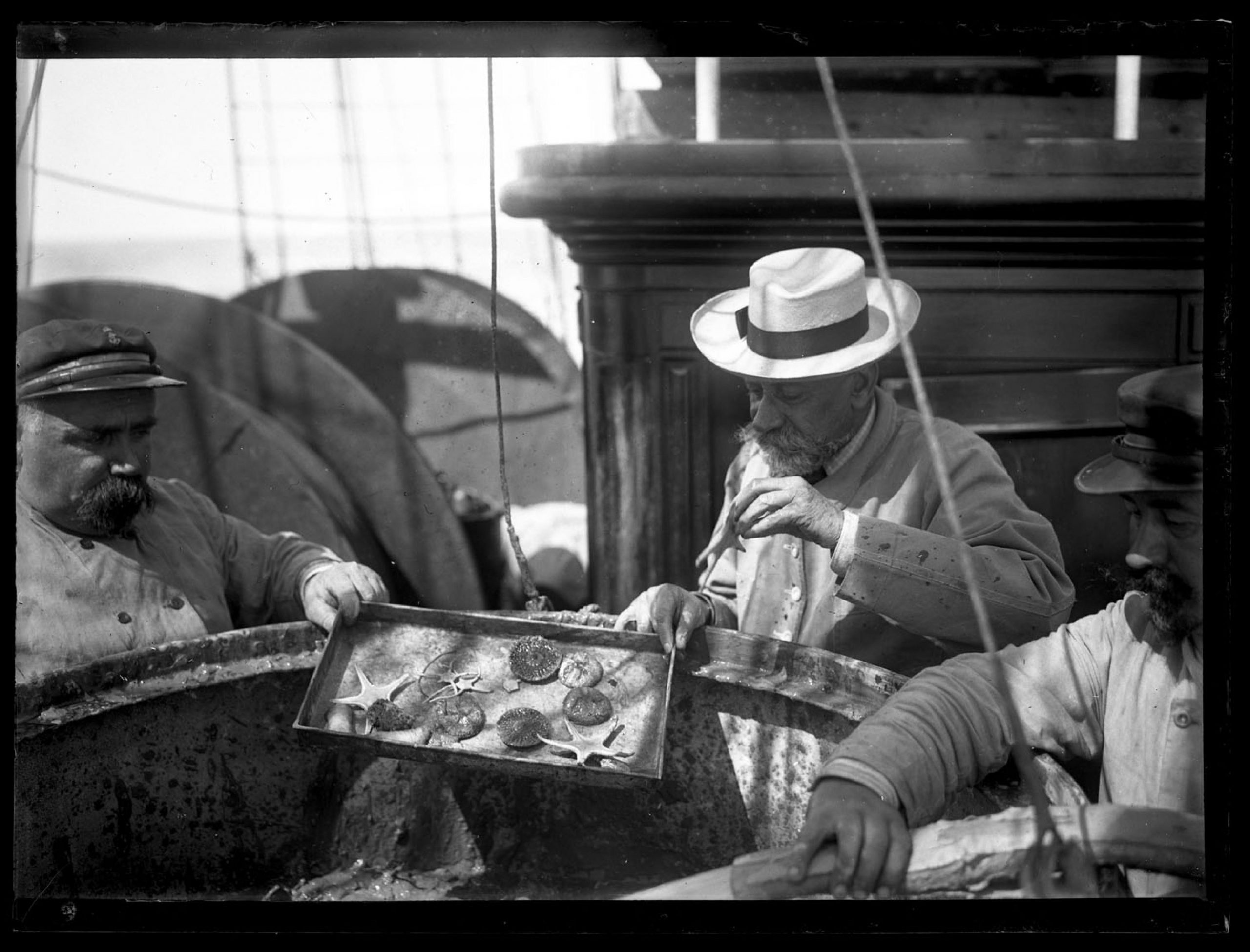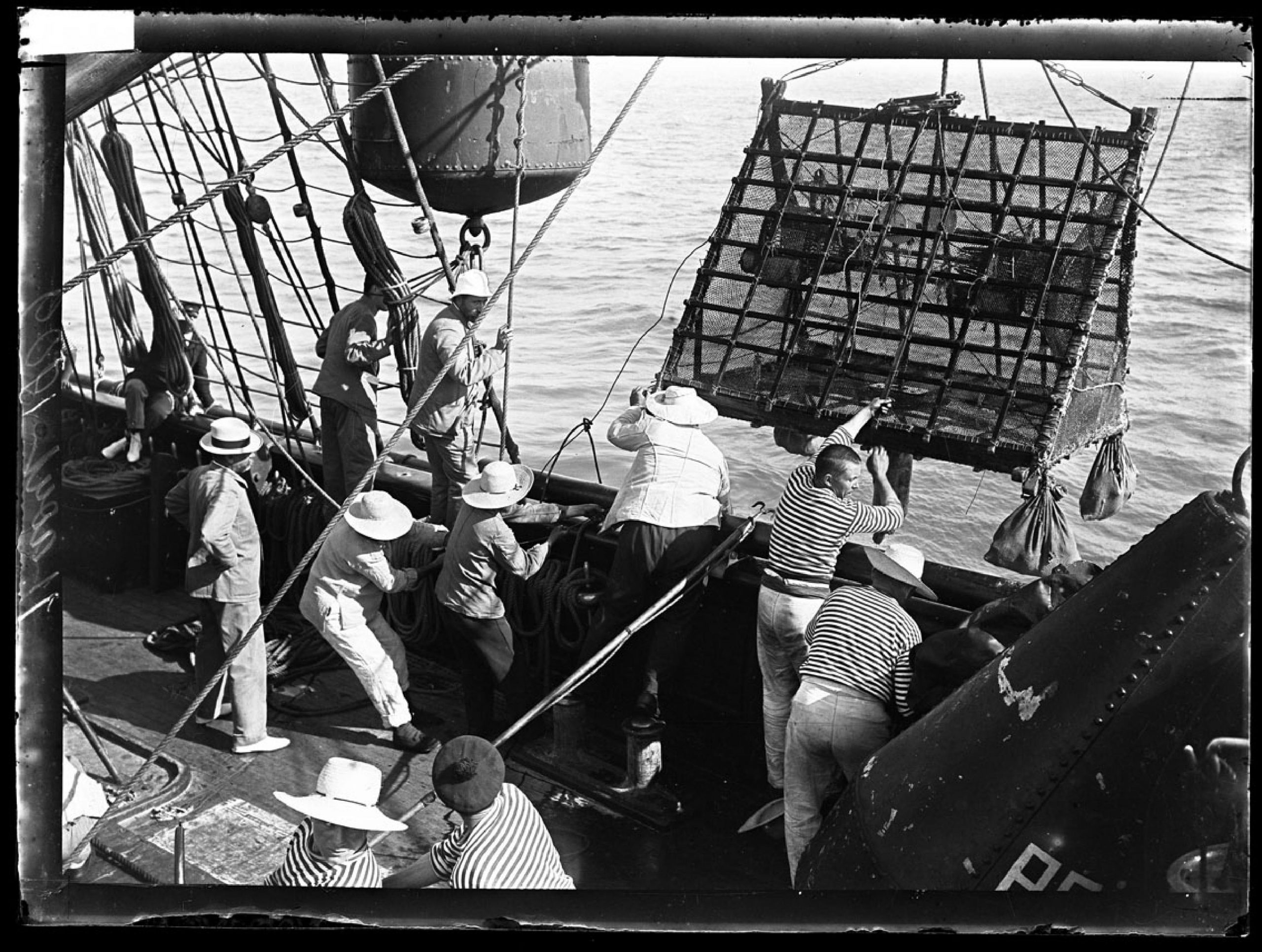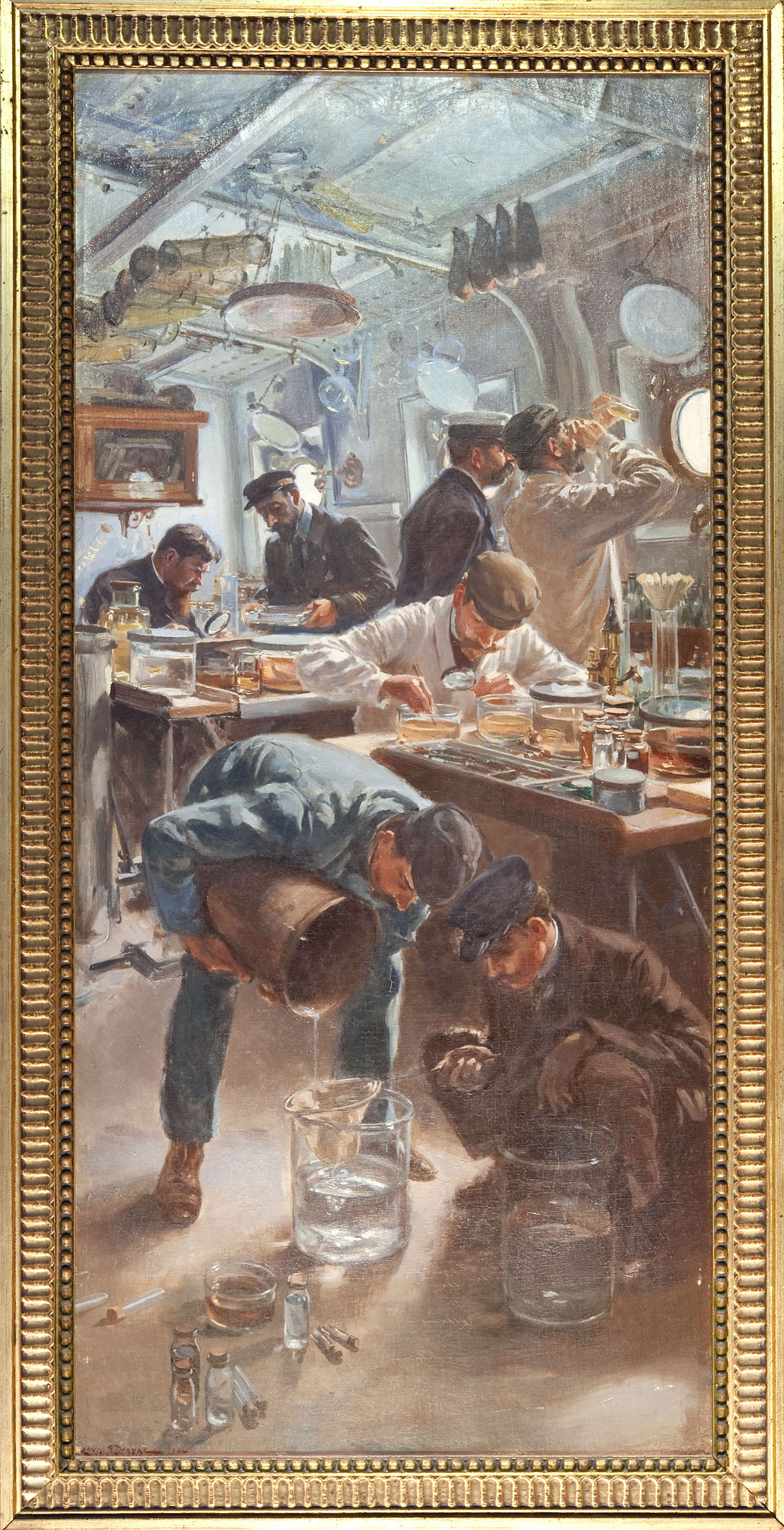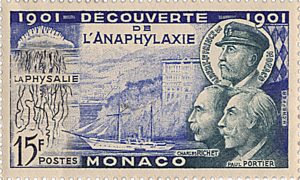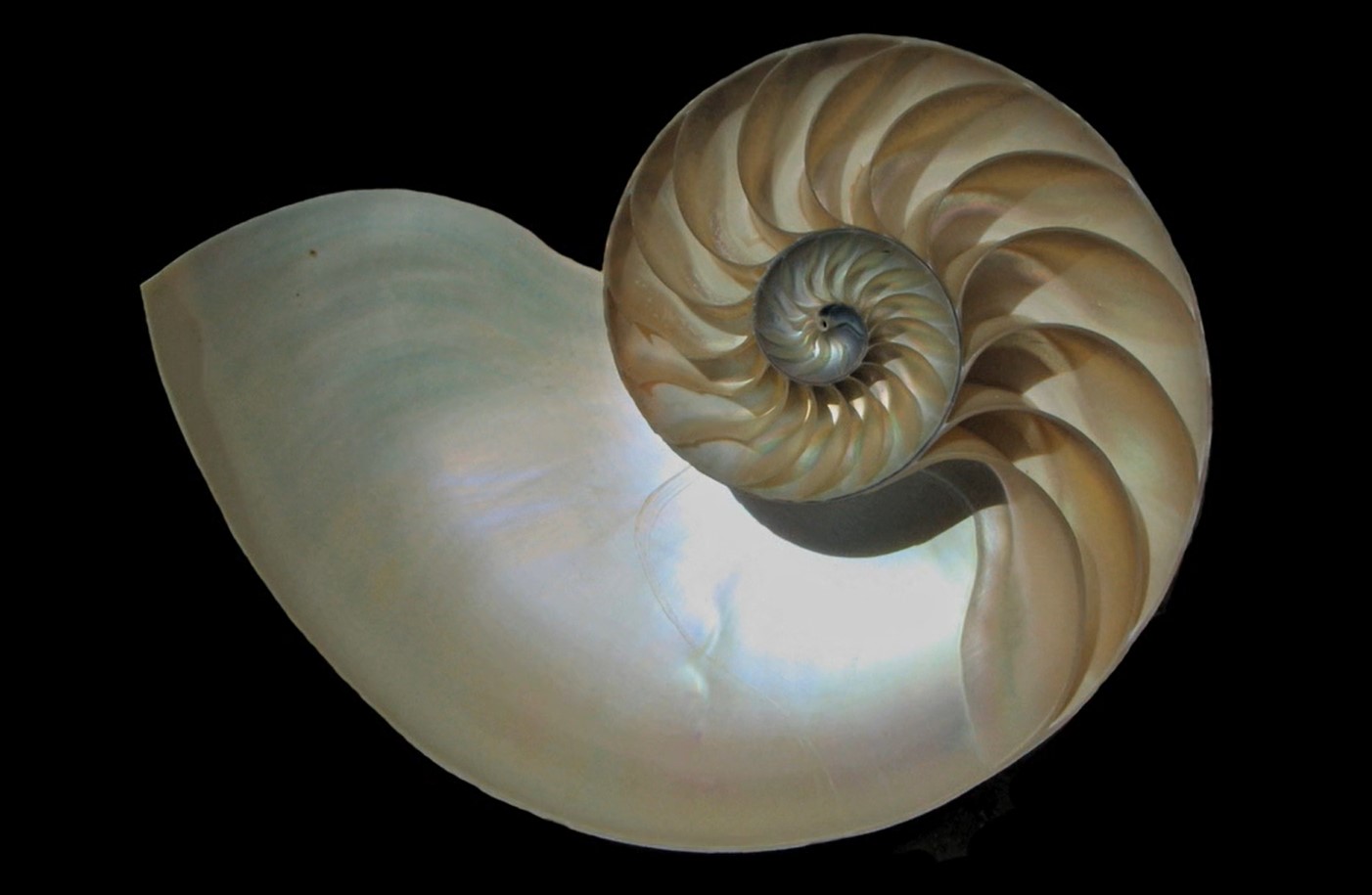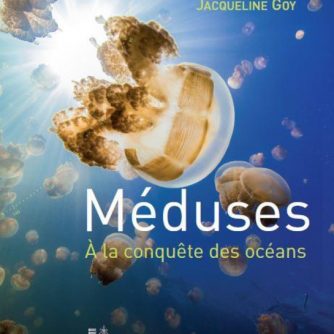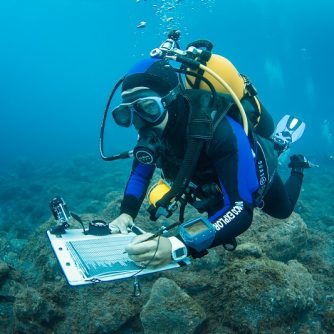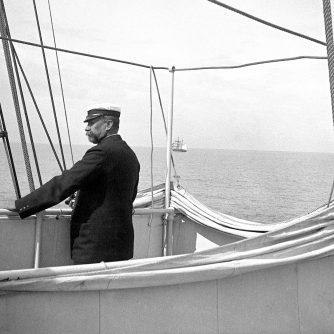HEALTH & OCEAN
- Home
- Actualités
- Health and Ocean
the benefits of the ocean
The coronavirus pandemic and the resulting unusual situation are particularly difficult times. Paradoxically, it is also an opportunity to question the relationship between human health and the environment around us…
The Institute of Oceanography is naturally concerned with the relationship between our health, the ocean and preserved biodiversity. Because the Ocean is a source of solutions!
The Ocean heals us, thanks to the molecules produced by marine organisms, and this is just the beginning, as marine organisms can quickly play a role similar to that of their terrestrial cousins for centuries!
Marine organisms are also used as study models because they often have characteristics close to the ideal model organism (prolific in embryos, simple and reproducible cell lineage, often external embryonic development, etc.). They have led to major discoveries in the varied fields of physiology, medicine and chemistry, including several Nobel prizes.
Everyday good health starts with a healthy and balanced diet. Every day, the ocean provides some of the elements that our metabolism needs, but the quality of the environment must be preserved!
A healthy ocean for healthy food
Health requires a sufficient and balanced diet, including a regular supply of proteins, vitamins, lipids, minerals and trace elements. The ocean provides us with a good part of these elements which are essential to our metabolism.
Worldwide, 20 kg of fish are consumed per year per person. 17% of the animal protein consumed by humans comes from fishing and aquaculture. In Indonesia or Sri Lanka, they provide at least 50% of the animal protein consumed by the population. This shows the major challenge of preserving resources for food security and health! Unfortunately, due to overfishing, pollution and illegal fishing, global fish stocks are declining. 33% are overexploited (in the Mediterranean, this rate reaches 62%!) and 35% of the fish caught do not reach our plate, a waste all along the chain, which we must no longer tolerate. If humanity is to remain healthy, it is essential to manage resources in a truly sustainable way, starting now. And it is possible!
Some specialists estimate that, if it is well protected and managed, the Ocean could provide two thirds of the world’s protein requirements, estimated at 500 million tonnes, by 2050.
This is only possible if the ocean remains a healthy environment for both organisms and us. The Ocean, which is remarkably robust to disturbances, is unfortunately sometimes “overtaken” by pollution from land-based sources: pesticides such as chlordecone, heavy metals, urban organic pollution, as well as the emerging issues of endocrine disruptors or nanoparticles. Sometimes it is the degradation of ecosystems that causes health problems, as when the death of corals gives way to algae and toxic ciguatera.
For a long time, the ocean has been mistaken for an inexhaustible larder and, at the same time, a bottomless garbage can. Today, we must take care of an extremely lively environment, which feeds and cares for us!
Discover the Institute’s Fact Sheets written by our experts on this topic:
The Ocean that heals
The ocean is the cradle of life on our planet. It is still home to an extremely diverse range of life: 34 of the 36 existing phyla, 14 of which have remained exclusively marine, 300,000 known species and even more unknown species.
The particularities of marine organisms make them an unexplored reserve of therapeutic avenues for the future.
Examples of molecules extracted from living organisms abound, used as anticancer, antimicrobial, antiviral, anti-inflammatory, antidiabetic, antihypertensive, anticoagulant and antioxidant agents. Of the 145,000 to 150,000 natural substances described, it is estimated that some 25,000 products of pharmacological or cosmetic interest have already been obtained from marine organisms, more than 30% of which are produced by sponges. This number has increased over the last few decades, suggesting that many new remedies will be available in the near future.
The conditions to which marine animals are exposed (yes, in terms of biomass, the ocean is more the domain of animals, whereas the terrestrial environment is more the domain of plants) are as diverse as they are original. In the abysses plunged into eternal night, ecosystems are organized around hydrothermal springs. The energy no longer comes from the sun, but from the chemistry of these very hot waters, loaded with sulfur and minerals. In polar waters, fish and invertebrates can withstand temperatures around 0°C. And all over the world, animals fixed to the bottom have to develop a biological arsenal to defend themselves and preserve their living space, since they cannot escape from predators.
For millions of years, the marine environment and in particular the coral reef has been in a chemical arms race! In a highly competitive environment, organisms produce metabolites and chemical mediators that play a fundamental role in the structuring and functioning of ecosystems, for example in competition for space, colonisation of surfaces, defence against predation, seduction for reproduction, etc. These attractants or repellents are of great interest in various fields of chemistry for the living (human and animal health, cosmetics, phytopharmacy, antifouling paints…).
The first significant work in the chemistry of natural marine substances was that of Professor Werner Bergmann, in 1951, who isolated from a Florida sponge unusual nucleosides (building blocks of nucleic acids, DNA and RNA) that pharmacochemists had the idea of using to design anti-tumour molecules. In 1969, researchers discovered in a Caribbean gorgonian Plexaura homomalla large quantities of a prostaglandin (molecules capable of causing or stimulating uterine contractions) that the pharmaceutical industry was struggling to synthesize. Today, most of the marine-based molecules in clinical development are intended for the treatment of cancers or the fight against viruses.
Discover the Institute’s Fact Sheets written by our experts on this topic:
Getting involved yourself
More than a thousand compounds isolated from marine organisms have been shown to have antiviral effects, and a recent study found that griffithsin, a protein isolated from thered alga of the genus Griffithsia sp.… could be an inhibitor of certain coronaviruses by inhibiting their spike proteins, which give them their crown-like appearance, thus preventing their entry into host cells.
From the haemoglobin of a marine worm, the arenicola, which lives in the sand, the biotechnology company Hemarina has developed a “molecular respirator”, a molecule of marine origin which has the property of storing and transporting oxygen better than human haemoglobin (it binds 40 times more!). This molecule should enter a test phase on patients suffering from the coronavirus with the aim of treating respiratory distress syndrome linked to Covid-19, thus freeing up artificial respirators for other patients and relieving hospital services. This molecular respirator could find other applications in very specific cases, such as the transport of organs before transplantation.
The Marseille-based company Coral Biome is interested in palytoxin (produced by soft corals of the genus Palythoa, order Zoantharia), a highly toxic molecule used in the treatment of certain cancers.
Numerous compounds, currently in clinical development for anticancer activities, have been isolated from the colonial ascidians Didemnum molle, common sessile marine invertebrates (characterized by their attachment to a support) living within the coral reef.
Approximately 1,000 times more effective than morphine, an analgesic synthesized by copying a molecule present in the venom of the Conus magus cone (a marine gastropod mollusc) is particularly indicated for alleviating intense chronic pain.
The Ocean is thus a huge library as well as a pharmacy. It is essential to recognise and value these functions, and to avoid seeing them evaporate as a result of climate change, overexploitation of species and the degradation of marine ecosystems, driven by an overly short-sighted view focused on the profits of fishing, hydrocarbons and soon mineral resources.
Discover the Institute’s Fact Sheet written by our experts on this topic:
Marine organisms as models for science...
The ocean offers valuable models for fundamental research and many studies have led to decisive advances in physiology, medicine and chemistry. No less than thirteen Nobel Prizes in medicine or chemistry have been awarded for work based on aquatic organisms: fish, cnidarians such as the jellyfish Aequorea victoria or the siphonophore Physalia physalis, molluscs (bivalves, cephalopods, sea slugs), crustaceans (crabs), echinoderms (sea urchins, starfish), even protozoa…
It was through his work on the intestines of anemones or on a starfish that Ilya Ilyich Mechnikov discovered phagocytes and phagocytosis (the process by which a cell engulfs and then digests a foreign substance) in 1883. He shared the 1908 Nobel Prize in Physiology and Medicine with Paul Ehrlich and has since been considered the father of cellular immunity.
By measuring the changes in electrical charges and the way nerve impulses are exchanged between cells in a very large nerve fibre of a species of squidJohn Carew Eccles, Alan Lloyd Hodgkin and Andrew Fielding Huxley were pioneers in the study of nerve impulse transmission and were jointly awarded the 1963 Nobel Prize in Physiology or Medicine.
Discover the Institute’s Fact Sheet written by our experts on this topic:
AND THE SOURCE OF MANY NOBEL PRIZES
The sea urchin served as a model for Otto von Warburg’s discovery of anti-polyspermia calcium waves (only one sperm per oocyte). For Eric Kandel and his work on the molecular basis of memory, it was a sea slug.
While studying the cell cycle of sea urchin eggs, Sir Tim Hunt discovered cyclins and demonstrated that these proteins, which break down during the different phases of the cell cycle, play a crucial role in its regulation, not only in echinoderms, but also in vertebrates. This research later had important implications for the study of key molecules involved in cancer development (cyclin and kinase) and earned Timothy Hunt, Leland Hartwell and Paul M. Nurse the 2001 Nobel Prize in Physiology and Medicine.
The 2008 Nobel Prize in Chemistry was awarded to Osamu Shimomura, Martin Chalfie and Roger Tsien for the discovery of electroluminescent organs in the jellyfish Aequorea victoria of a green fluorescent protein (GFP) that glows intensely under ultraviolet light. This protein truly revolutionized the life sciences by making it possible to track, among other things, how cancerous tumors form new blood vessels, how Alzheimer’s disease kills brain neurons, and how HIV-infected cells produce new viruses.
This protein, synthesized since 1994, is used in medical research. Scientists are now able to modify the gene that controls GFP production to give different stainings that allow us to study proteins in their natural environment and understand certain processes to improve our knowledge of the complex network that is the human brain.
Aequorein, another protein extracted from the jellyfish Aequorea victoria, is used to measure calcium in muscle tissue at the level of nerve endings.
Getting involved yourself
In the summer of 1901, Prince Albert Ier led his annual Atlantic expedition from the Cape Verde Islands to the Azores. During previous campaigns, with Dr. Jules Richard, his close collaborator, he had had the opportunity to observe that the sailors manifested an extremely sharp pain, which could go as far as syncope, on contact with a kind of jellyfish, a pelagic cnidarian called physalia Physalia physalis. He thought that a venom was probably involved.
Charles Richet, Professor at the Faculty of Medicine of Paris, and Paul Portier, assistant of physiology at the Sorbonne, were invited to join the expedition in order to isolate this venom and study this phenomenon. The work carried out on board the second Princesse-Alice with the physalie, then on their return to Paris, in particular with the anemones Actinia equina and Anemonia ceraeThe first phase of the study, which was carried out in the United States, consisted of injecting cnidarian extracts into guinea pigs (dogs and pigeons) with a sufficiently long interval between each injection and using low doses of toxins.
Instead of being immune, the guinea pigs became increasingly sensitive, even dying. Richet and Portier published the discovery of anaphylaxis in 1902 and defined it as : ” We call anaphylactic, as opposed to phylactic, the property of a venom to diminish rather than enhance immunity when injected in non-lethal doses». This discovery laid the first foundations of allergology (all the knowledge relating to the reactions caused in the body by the introduction of a foreign substance called an antigen) and earned Charles Richet the 1913 Nobel Prize for Physiology and Medicine.
Link to the Nobel Prize :
https://www.nobelprize.org/prizes/medicine/1913/richet/lecture/
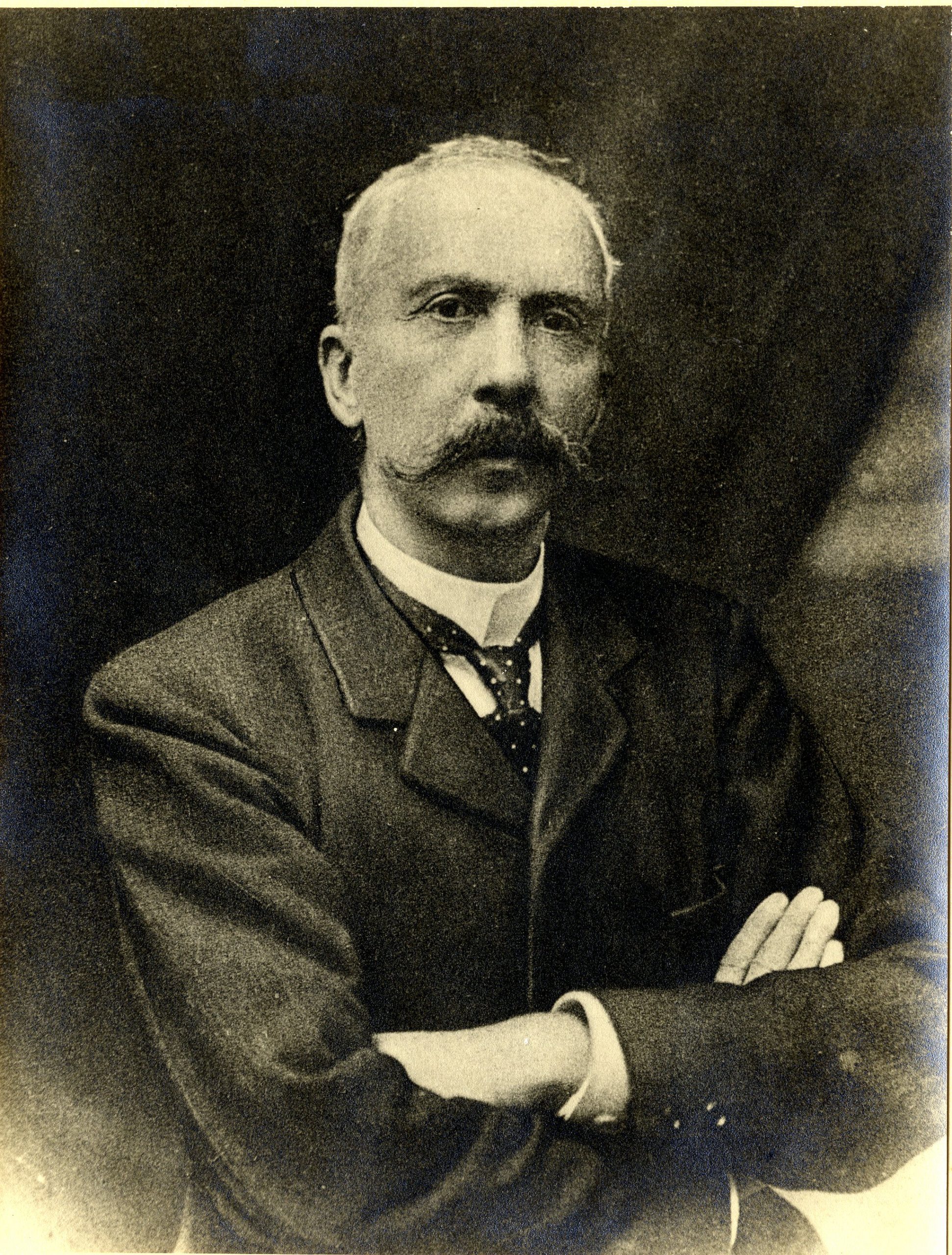
Experimenting with extracts from the tentacles of certain sea anemones, Richet and Portier found that dogs injected with the extract became overly sensitive to the action of a second dose. These dogs could be killed by an amount that was only a fraction of the fatal dose for an untreated dog. They called this state of abnormal sensitivity of the subject to the action of certain substances Anaphylaxis. ...] There was at first much surprise and disbelief, for scholars had hitherto been accustomed to regard the immunization or sensitivity-decreasing reaction as the appropriate response of an organism to the injection of foreign substances. It was therefore surprising that the exact opposite phenomenon could occur. Thus the laws of immunity were completely overturned.
Le Prince Albert Ier, Avril 1921
Prince de Monaco, 1889-1922
Biomimicry and bio-inspiration
Biomimicry and “bio-inspiration” (some researchers consider that we do not copy nature but are inspired by it) are approaches that consist in studying nature in its innumerable forms (animals, plants, fungi, micro-organisms, ecosystems). They offer the possibility of changing the way we grow or raise organisms, make materials, store information, heal ourselves or produce energy. Coral reefs, because they are extremely productive communities, rich in biodiversity and the territory of expression of a multitude of chemical mediators, constitute a precious source of inspiration in terms of health, for our contemporary cities in search of effective and sustainable solutions.







